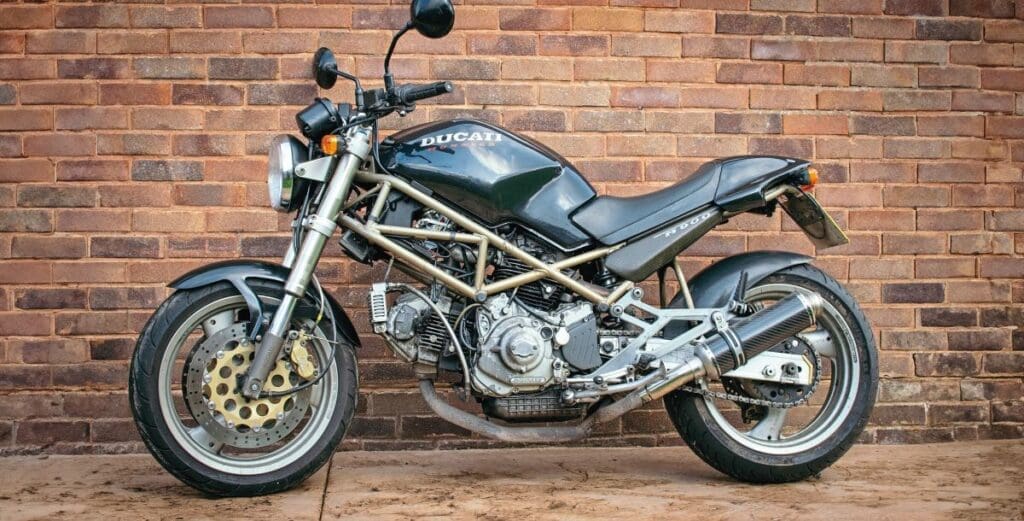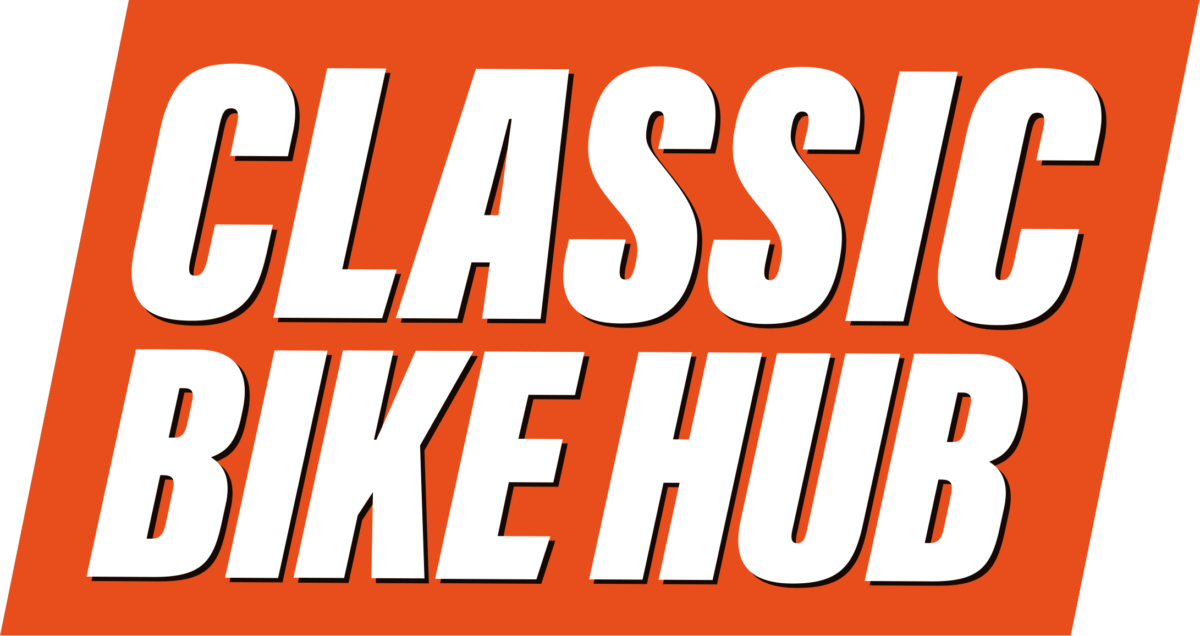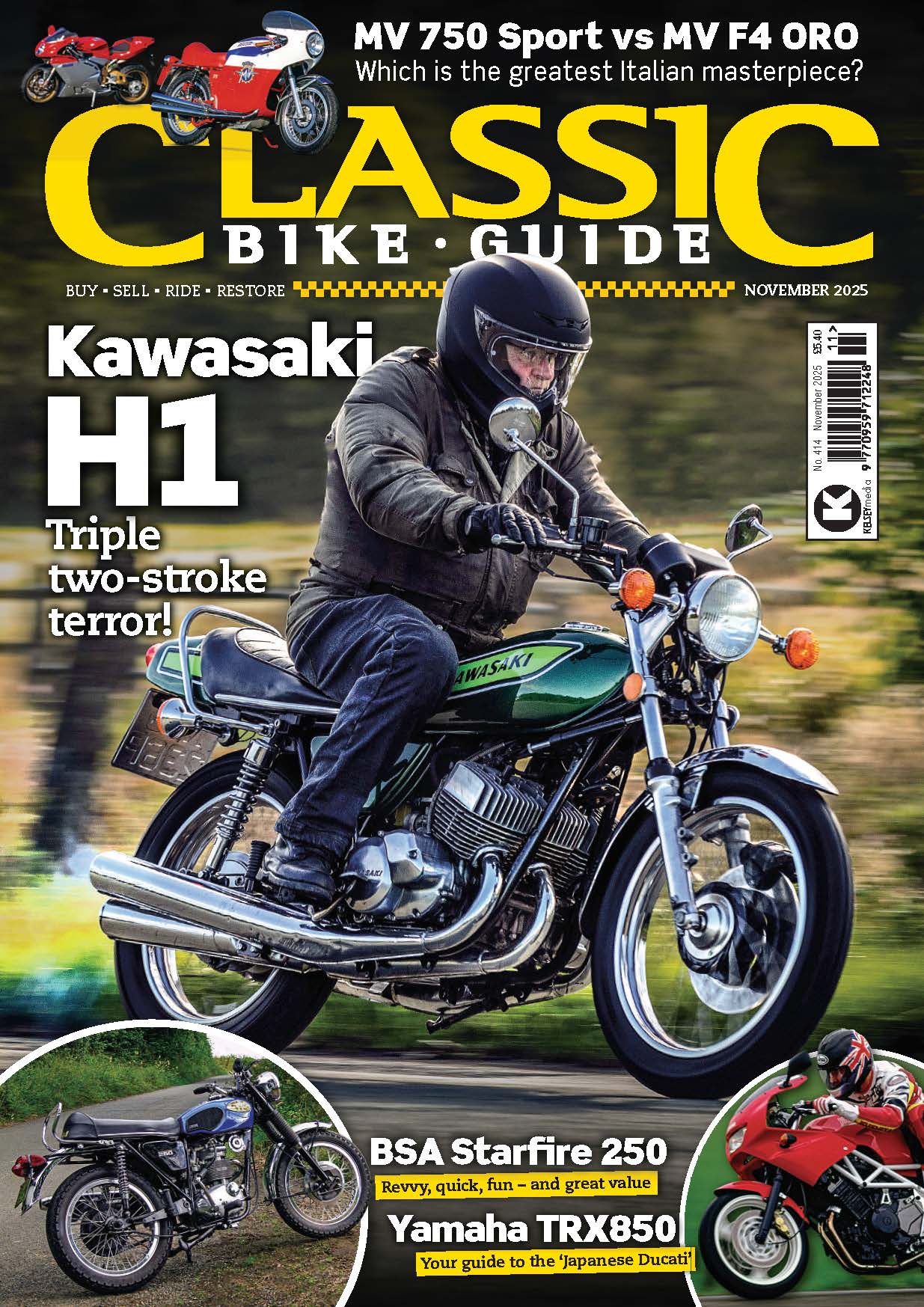Ducati created the Monster as a city bike, a bike to personalise with options, and based it on as many off-the-shelf parts as possible to keep the price down. But this budget naked sold so well that the Monster saved Ducati. We have a brief look at what you can do with one…
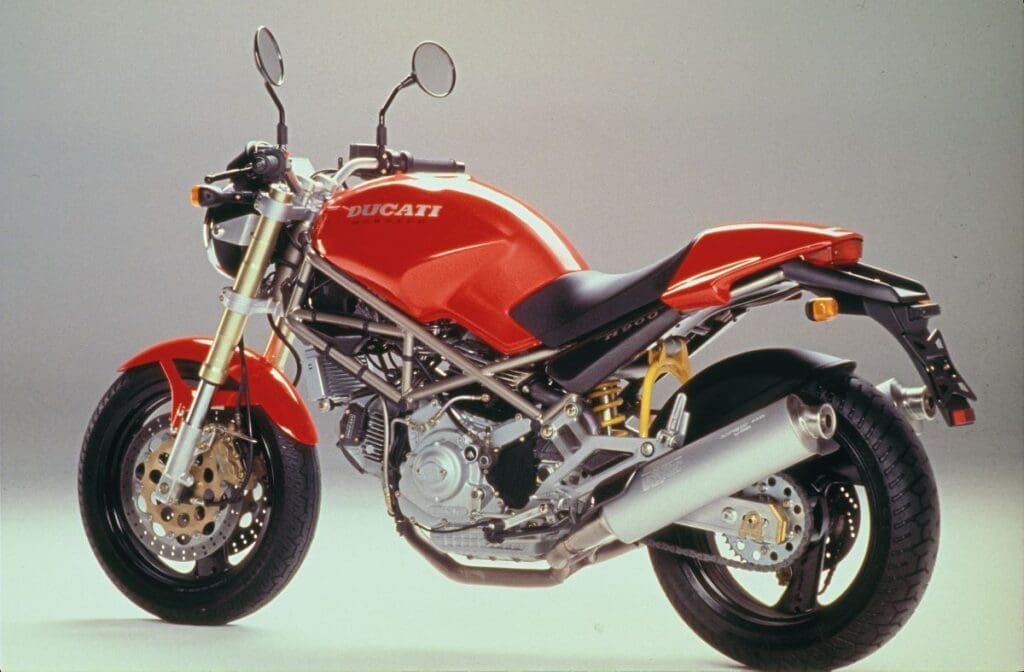
Words and photography by Oli Hulme and Matt’s archive
So, you want to own a Ducati but don’t like fairings, or back pain, and get bored of long, sweeping bends. Do you like riding on back roads and racing through city centres with traffic light GPs and the crobba-crobba of the big (or indeed not so big) L-twin? What you may need in your life, then, is a Ducati Monster.
Enjoy more classic motorcycle reading, Click here to subscribe to one of our leading magazines.
Launched in 1993, the Monster didn’t just help make Ducati a success – it had a massive influence on motorcycle design around the world. Until the Monster, urban street bikes followed the faux-Harley line or were just naked fours. The Monster was something new, and it was extremely cool. Designed by Miguel Galluzzi from a concept by Ducati technical director Massimo Bordi, this flash of genius introduced the world to the ‘retro bike’. It took rivals some time to catch up.
It usually used (not very) detuned versions of the SS range of engines, mounted in a frame derived from the 851 Superbike, with small but significant changes that made it nimble and much easier around town, and easier to live with on the road, with more forgiving handling and better turning circles. Suspension, wheels, brakes, electrics and build principles were all from within the Ducati range, and this minimalist bike with a sporty feel was meant to be a blank canvas that owners could personalise with Ducati accessories.
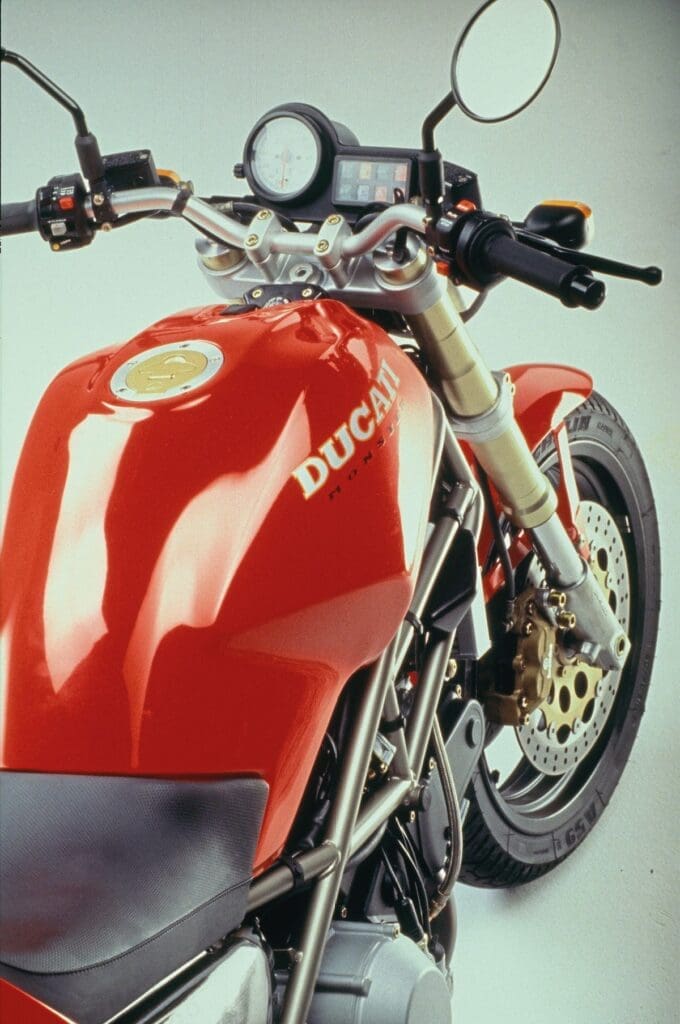
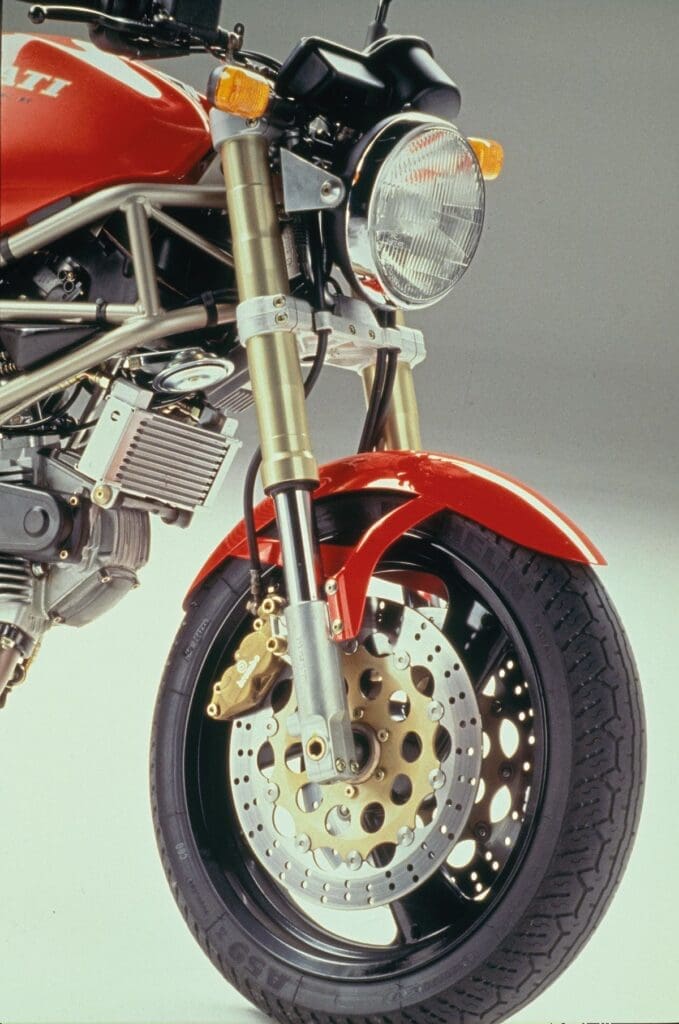
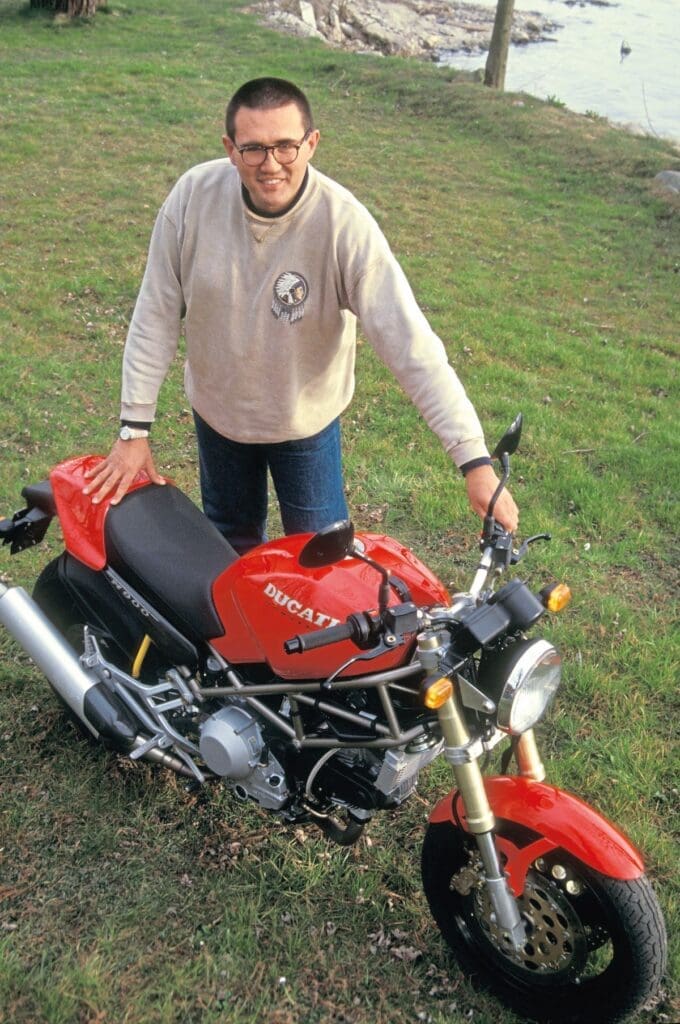
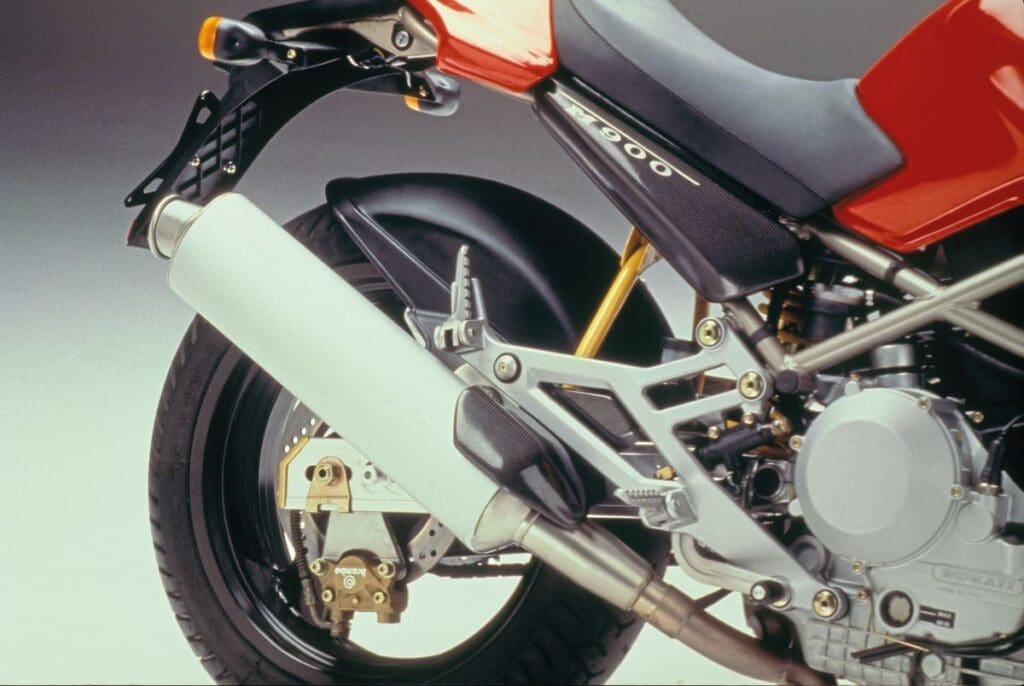
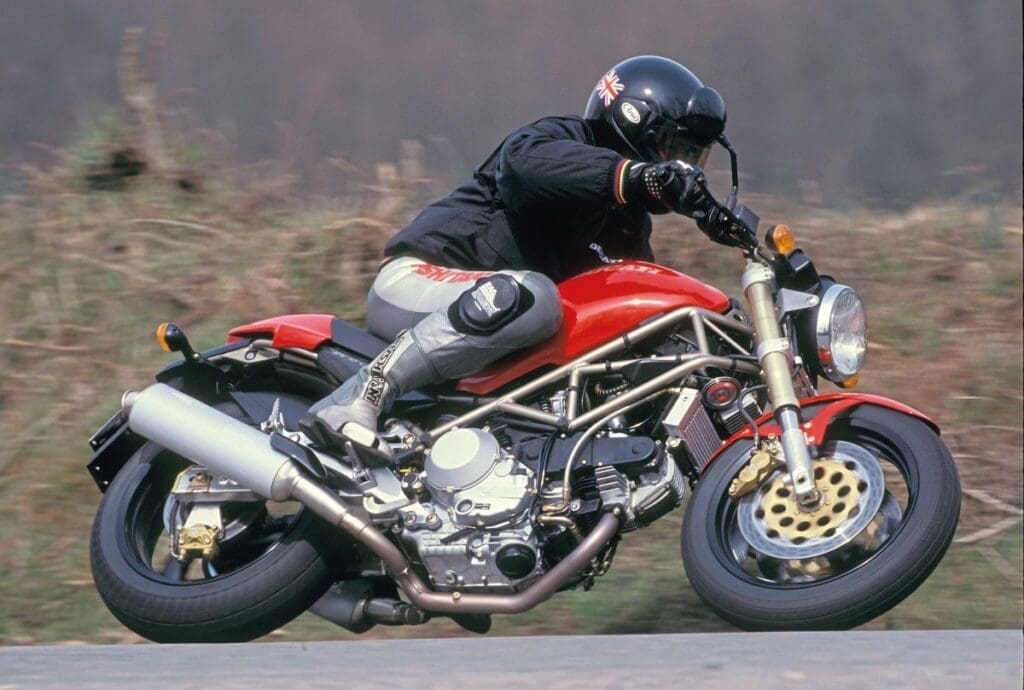
Although technically a parts bin special, the Monster gained a huge following and, unlike the SS line, the smaller bikes were as loved as much as the big ones. It didn’t make too much difference when sitting in the wind! Monsters were at one point making up half of the Ducatis sold and still prop up the company’s line. There were, as with the SS, 400, 600 and 750 Monsters to follow the 900 and as with the SS, 400 and 600 monsters had single discs and less sophisticated suspension. Early 750 Monsters also came with single discs, and even after Ducati added a second disc, the 750 never sold well; price and performance was too similar to the 900.
In line with the other bikes in the range, the Monster received fuel injection in 2000, yet the headlines came from putting the 851, 4v, water-cooled Superbike V-twin in to the S4. You then had the S4R, which had the 996 engine and exhaust pipes stacked on one side, with a single-sided swing arm. And it still hasn’t stopped – the Monster range carries on, though very different nowadays, still receives the sportsbike engines, and still provides a sporty naked bike with that Ducati edge.
Like the SS, however, most people agree that the early ones are best-looking, and some would say the nicest to ride, devoid as they are of rider control additions and the like. The early Monster is a full-throated big twin, the way Ducati intended it to be before things got boring.
The higher ‘bars and head-forward riding position make it enjoyably aggressive to ride too, and it looks cool enough to have featured in as many movies as the 916. The other thing about a Monster is that you can muck about with it to make it handle better and breathe easier, which is harder to do with an SS.
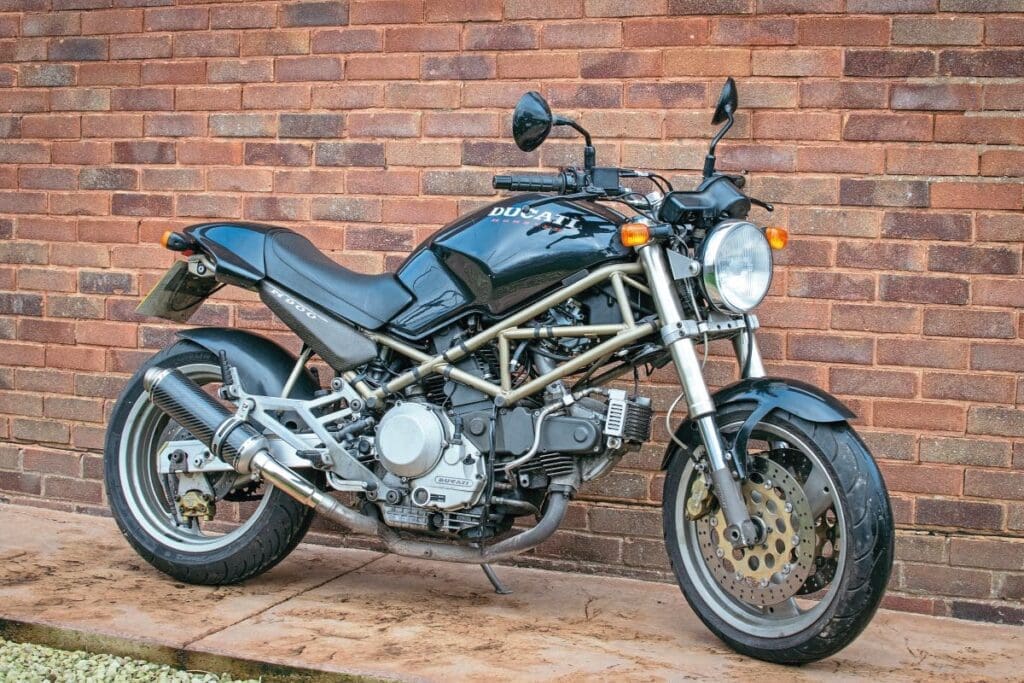
This Monster
It’s a 1998 model, a M900 Il Mostro, and uses the same powerplant in the 900SS but with some changes, including shorter gears. It has 900SS heads with large valves and John, the owner, has been making some not terribly subtle alterations. Later 900s had 750 heads on, Ducati presumably using up what it had left over on the shelves. Those 750 heads had narrower inlet tracts, smaller valves, and it is harder to get more power out of them.
John has fitted a pair of FCR 41 Keihin flat slide carbs from Allens Performance – which has added an incredible extra 30bhp – to replace pair of Mikuni 38mm carbs. There’s a quick-action, twin-pull Tomaselli throttle to make the most of this. The clutch is a stock hydraulic item, while the six-speed gearbox is as erratically Ducati as you might expect. At the back is a pair of quite noisy SP Engineering carbon fibre exhaust cans that make a noise like (Ed: insert something about the sound of an impending apocalypse here. Can’t Oli, they’ve all been done to death – Matt). And there is a custom-made aluminium Nitron rear shock absorber to soak up the bumps. This was made to suit John’s weight and was set up for the right amount of sag, too. The Monster has the sought-after rear seat cowl and carbon seat trim, and it still has the all-important Cagiva-era elephant frame and engine rubber bungs, which are a sign of authenticity among Ducatisti. There is an essential oil cooler. As it is a Ducati, the front cylinder and painted metal exhaust has suffered a little in the weather. This sort of thing is almost inevitable on most Ducatis and the only way to stop it happening is to not use it. And why would you do something silly like that?
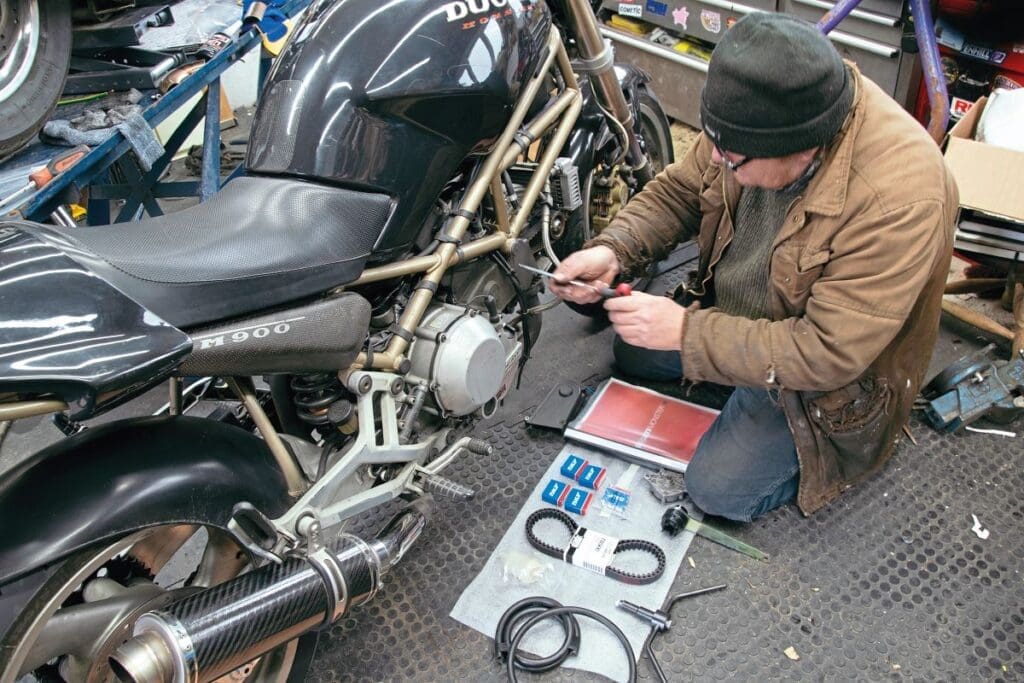

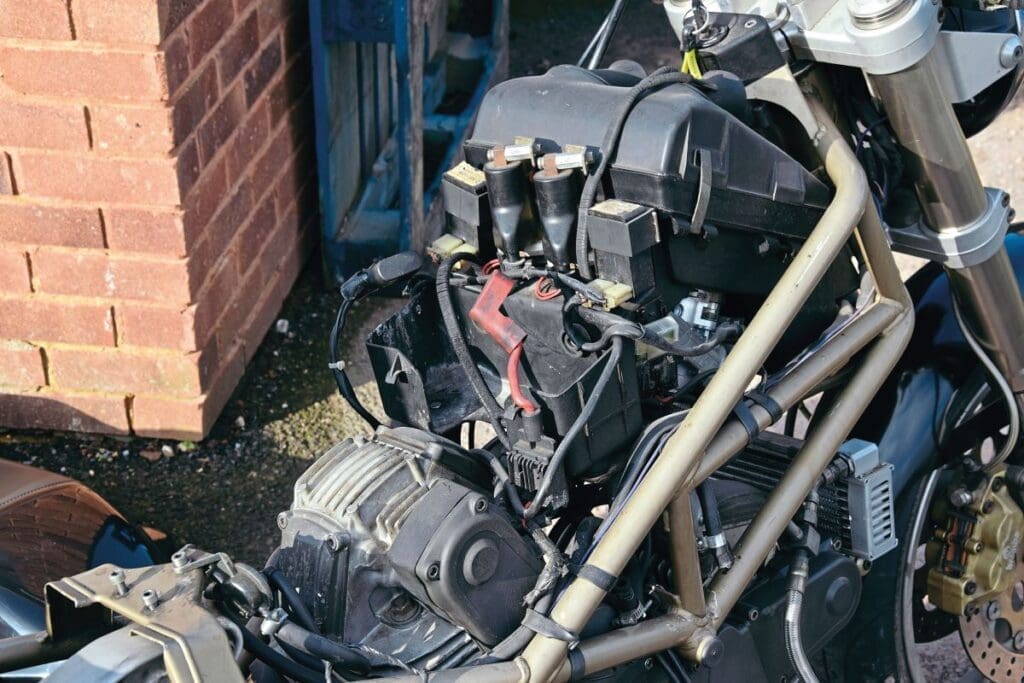
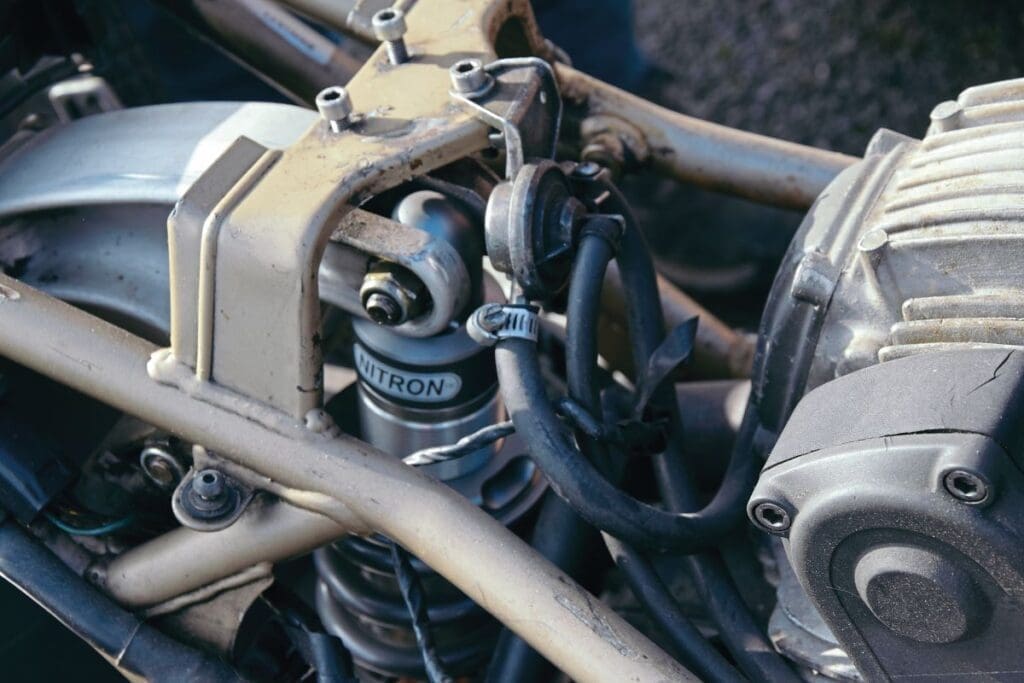
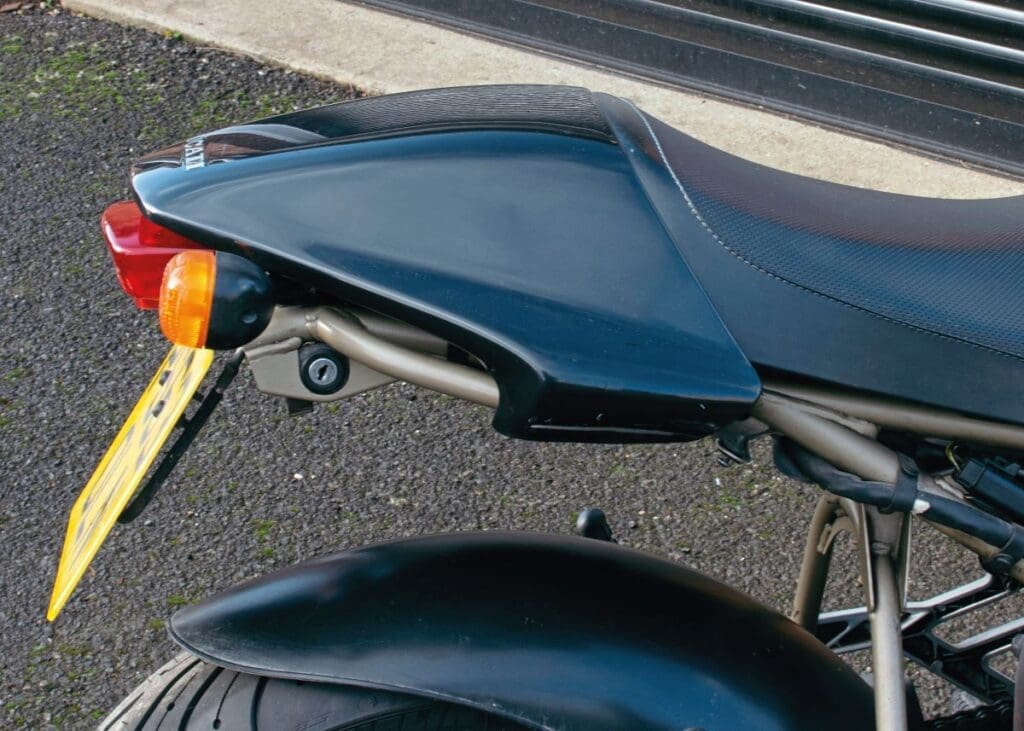
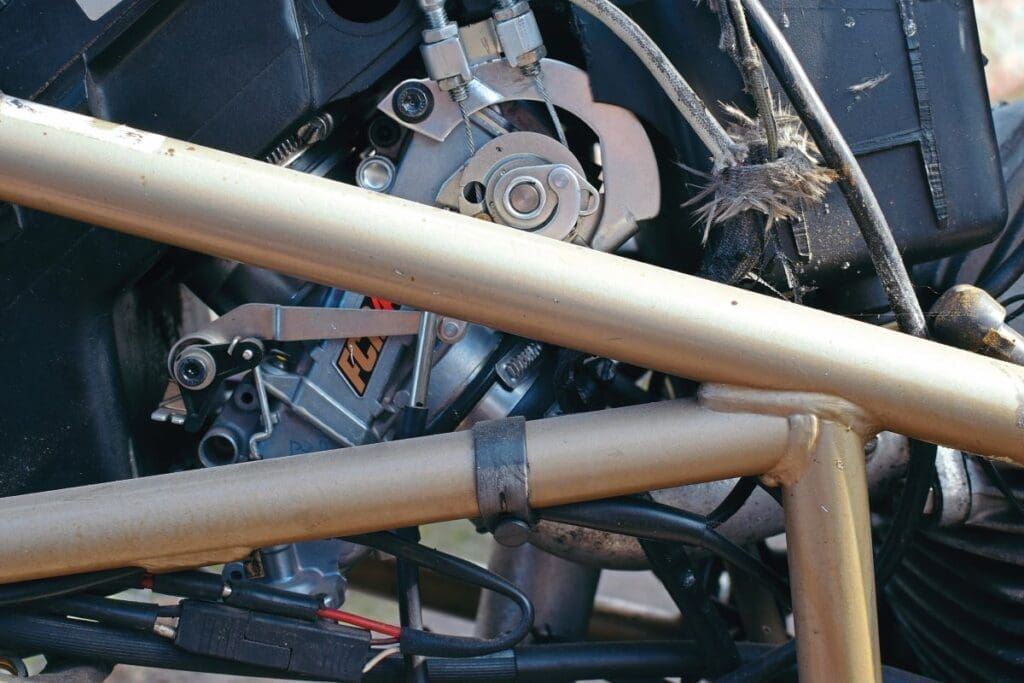
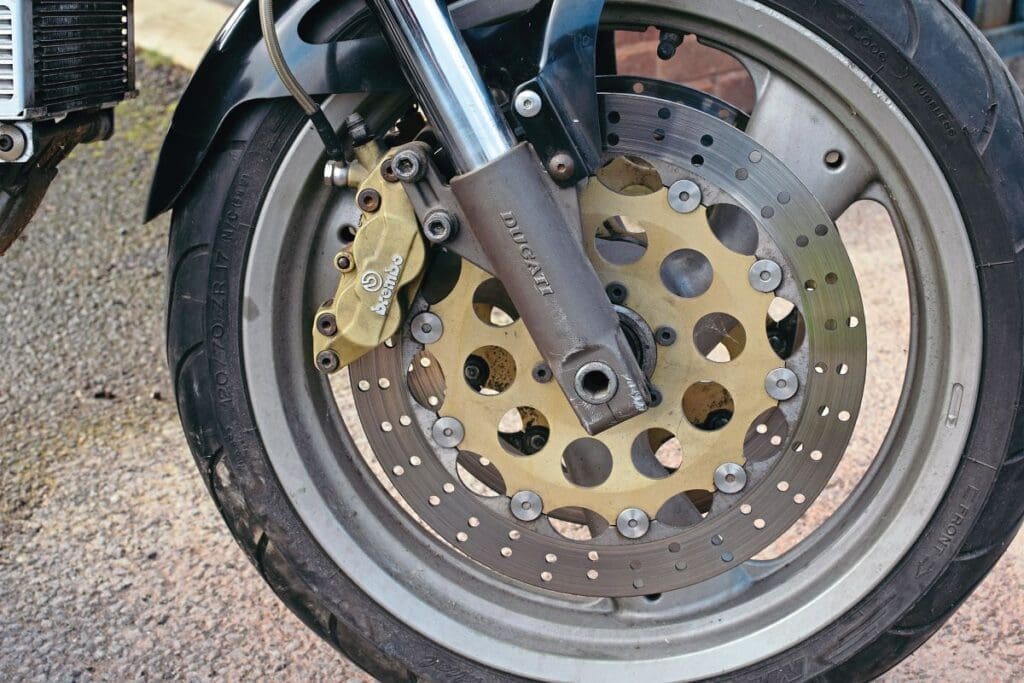
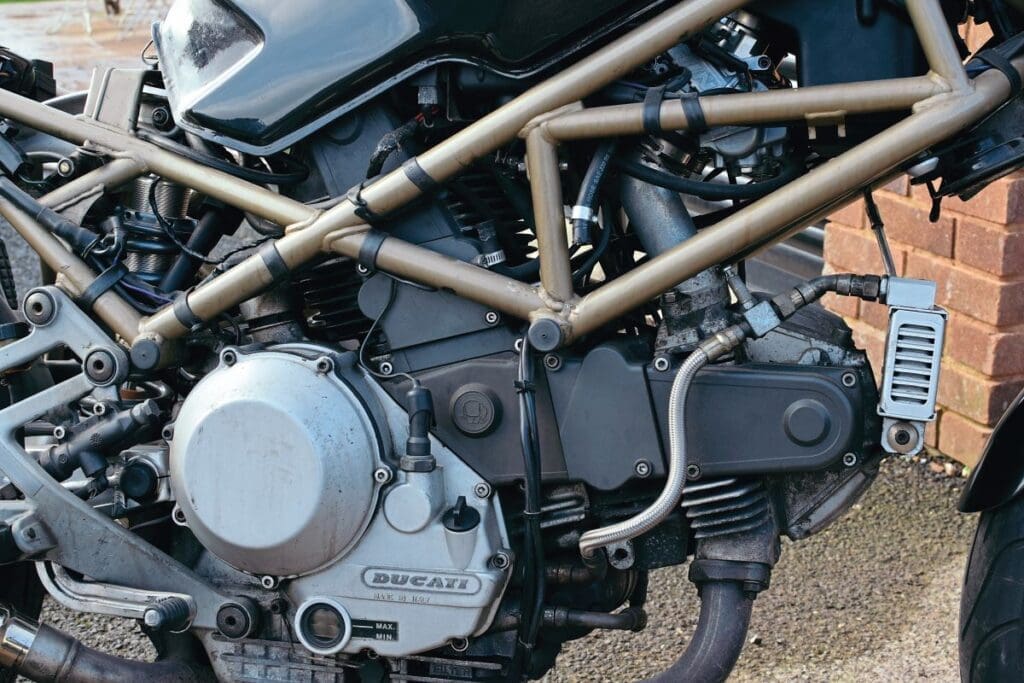
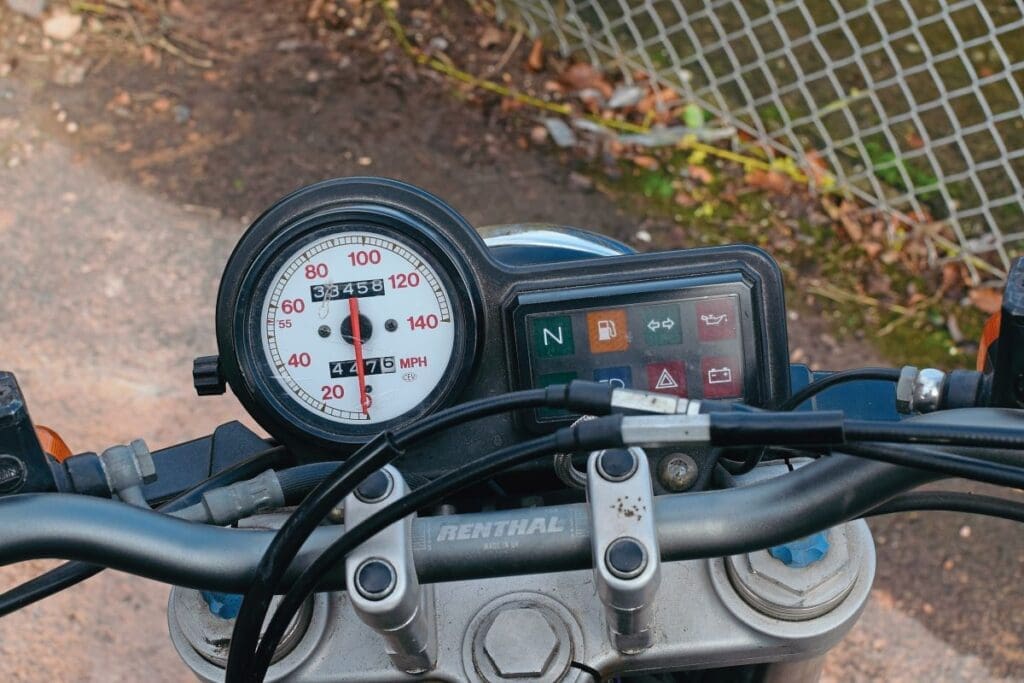
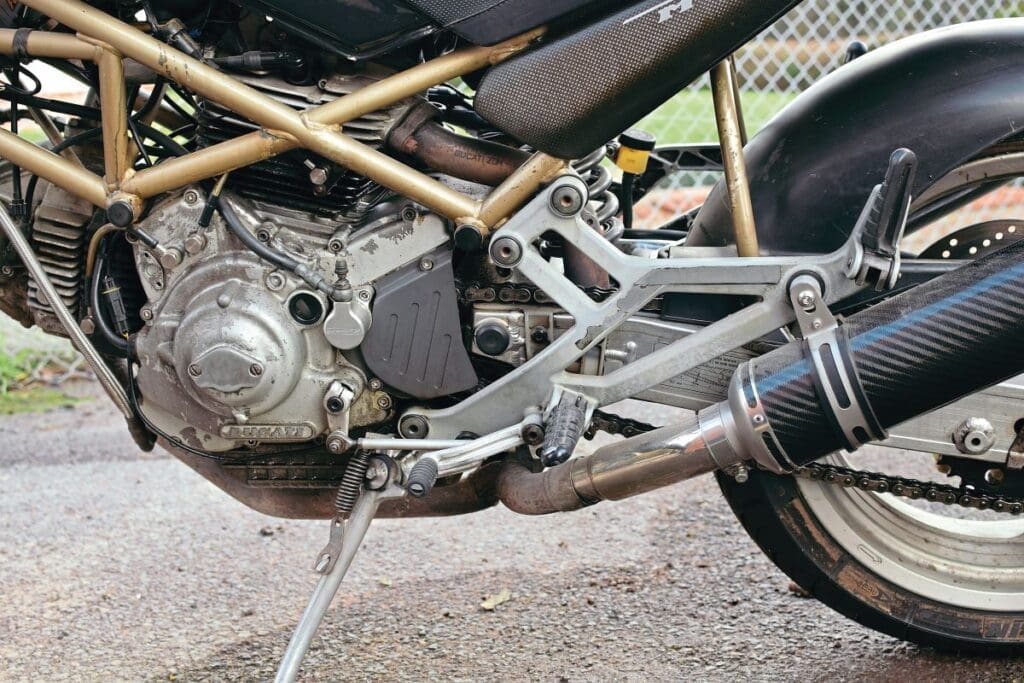
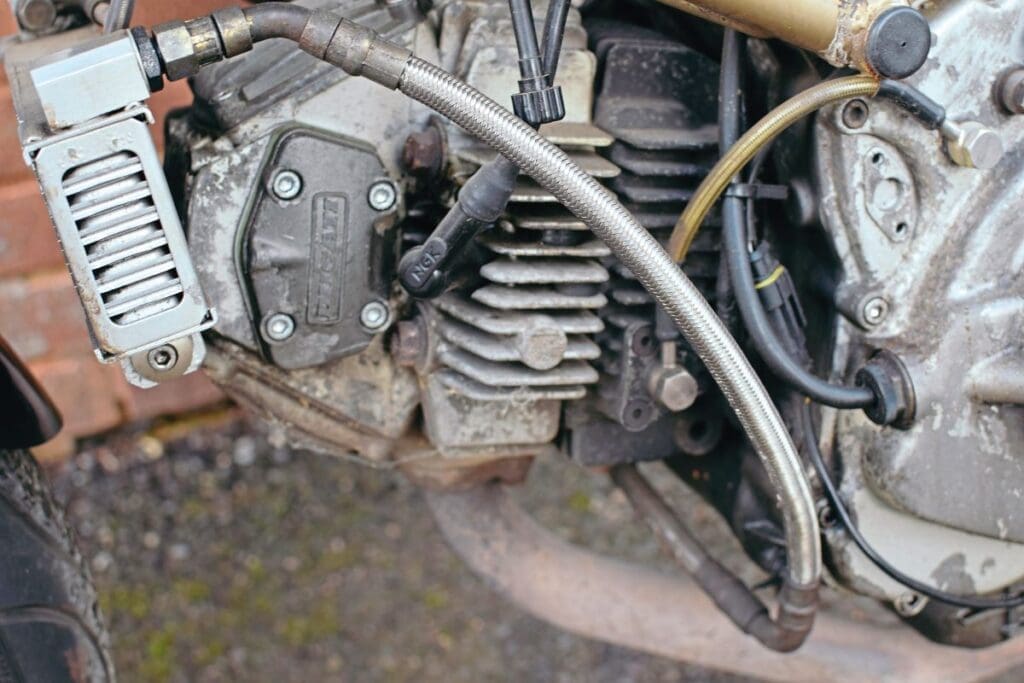
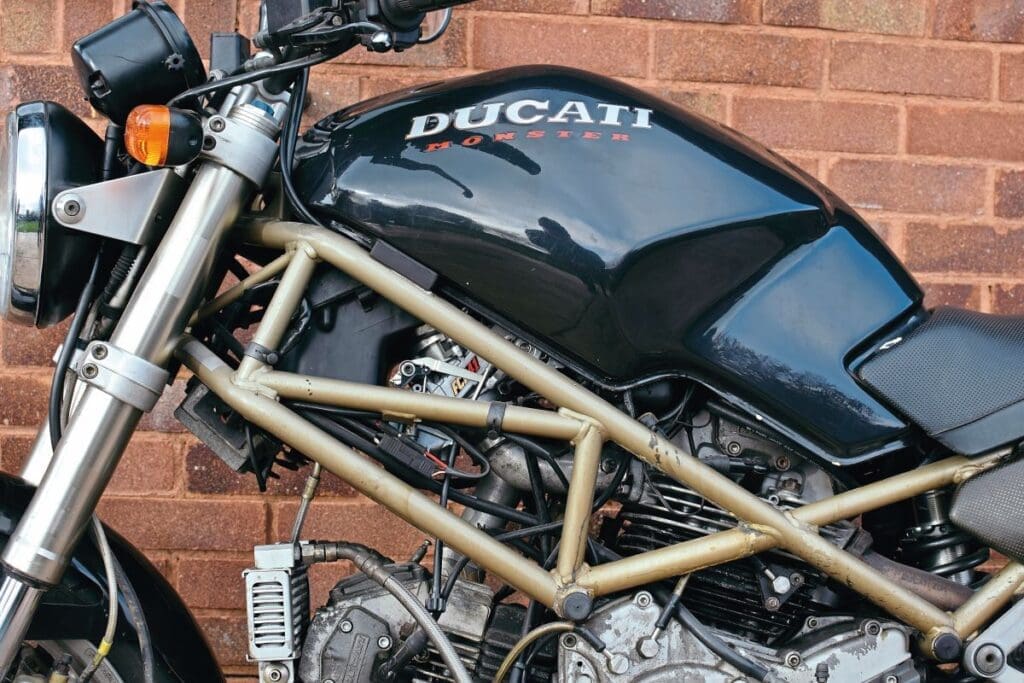
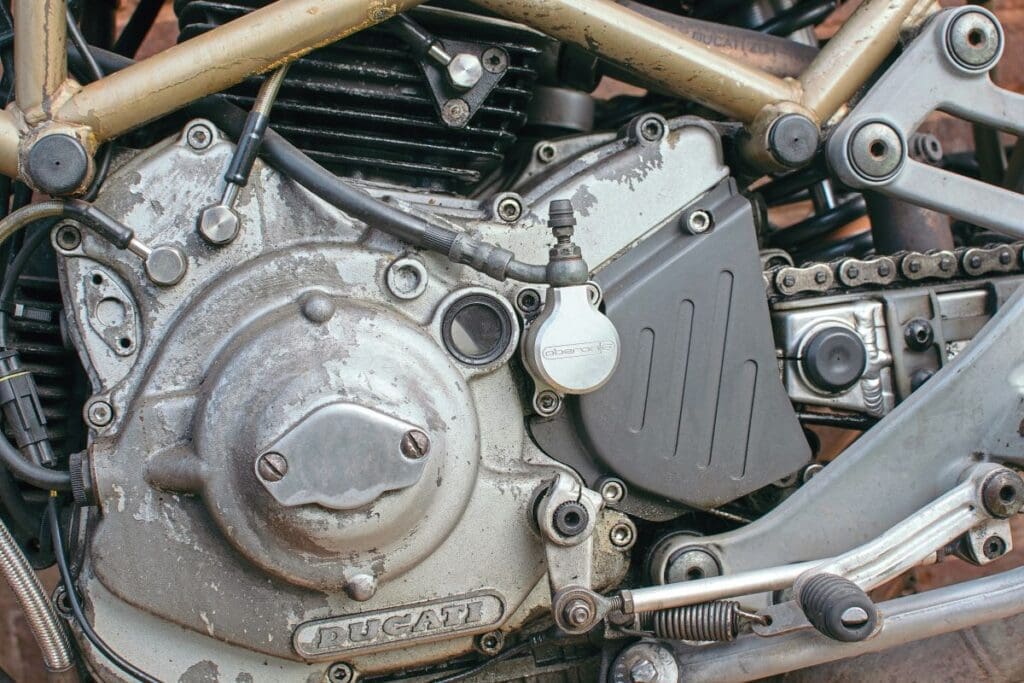
It is currently in John’s shed having a belt and bearing change and general service, a tank clean-out, and some new filters. John uses basic mineral 20-50 multigrade oil made from crushed dinosaurs, by the way. This Monster weighs less than the standard Monster, thanks in no small part to the carbon fibre cans. Stock Monster silencers are hefty beasts to be removed and stored in the shed for MoT time.
You can pick up a 600 Monster for about £1500 and a tatty 750 for not much more. John paid £2000 for his 900, and spent about the same on the shock, carbs and cans.
Maximum speed on a stock Monster 900 is a little over 120mph. It’s hard to say what the top speed is on John’s. One can only guess at “a bit more.”
